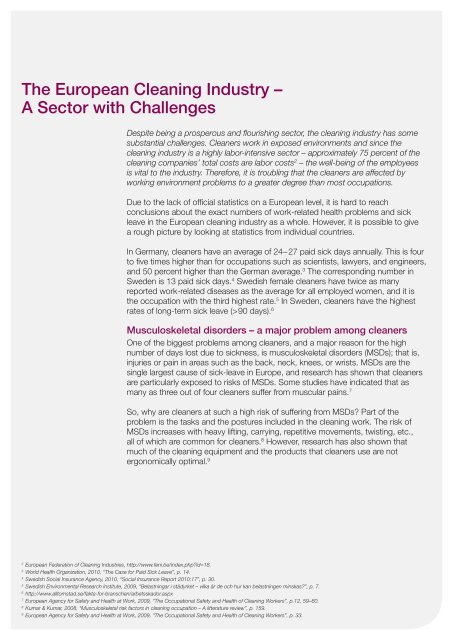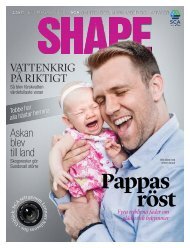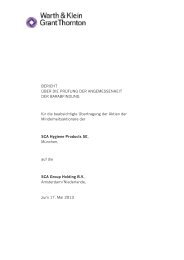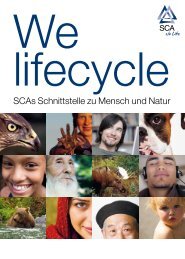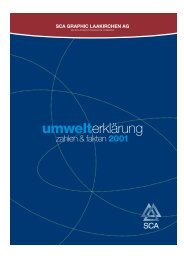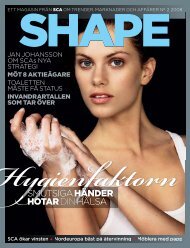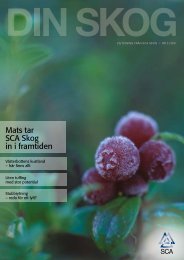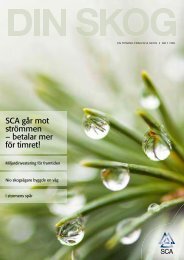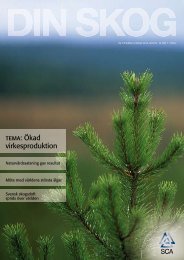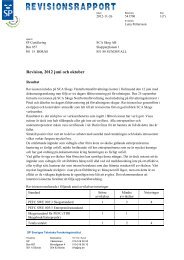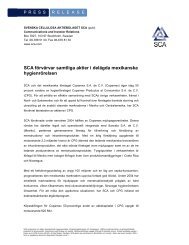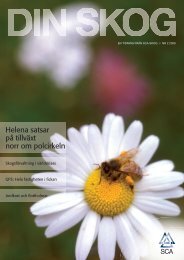the study and Tork Easy Handling here - SCA
the study and Tork Easy Handling here - SCA
the study and Tork Easy Handling here - SCA
Create successful ePaper yourself
Turn your PDF publications into a flip-book with our unique Google optimized e-Paper software.
The European Cleaning Industry –<br />
A Sector with Challenges<br />
Despite being a prosperous <strong>and</strong> flourishing sector, <strong>the</strong> cleaning industry has some<br />
substantial challenges. Cleaners work in exposed environments <strong>and</strong> since <strong>the</strong><br />
cleaning industry is a highly labor-intensive sector – approximately 75 percent of <strong>the</strong><br />
cleaning companies’ total costs are labor costs 2 – <strong>the</strong> well-being of <strong>the</strong> employees<br />
is vital to <strong>the</strong> industry. T<strong>here</strong>fore, it is troubling that <strong>the</strong> cleaners are affected by<br />
working environment problems to a greater degree than most occupations.<br />
Due to <strong>the</strong> lack of official statistics on a European level, it is hard to reach<br />
conclusions about <strong>the</strong> exact numbers of work-related health problems <strong>and</strong> sick<br />
leave in <strong>the</strong> European cleaning industry as a whole. However, it is possible to give<br />
a rough picture by looking at statistics from individual countries.<br />
In Germany, cleaners have an average of 24–27 paid sick days annually. This is four<br />
to five times higher than for occupations such as scientists, lawyers, <strong>and</strong> engineers,<br />
<strong>and</strong> 50 percent higher than <strong>the</strong> German average. 3 The corresponding number in<br />
Sweden is 13 paid sick days. 4 Swedish female cleaners have twice as many<br />
reported work-related diseases as <strong>the</strong> average for all employed women, <strong>and</strong> it is<br />
<strong>the</strong> occupation with <strong>the</strong> third highest rate. 5 In Sweden, cleaners have <strong>the</strong> highest<br />
rates of long-term sick leave (>90 days). 6<br />
Musculoskeletal disorders – a major problem among cleaners<br />
One of <strong>the</strong> biggest problems among cleaners, <strong>and</strong> a major reason for <strong>the</strong> high<br />
number of days lost due to sickness, is musculoskeletal disorders (MSDs); that is,<br />
injuries or pain in areas such as <strong>the</strong> back, neck, knees, or wrists. MSDs are <strong>the</strong><br />
single largest cause of sick-leave in Europe, <strong>and</strong> research has shown that cleaners<br />
are particularly exposed to risks of MSDs. Some studies have indicated that as<br />
many as three out of four cleaners suffer from muscular pains. 7<br />
So, why are cleaners at such a high risk of suffering from MSDs? Part of <strong>the</strong><br />
problem is <strong>the</strong> tasks <strong>and</strong> <strong>the</strong> postures included in <strong>the</strong> cleaning work. The risk of<br />
MSDs increases with heavy lifting, carrying, repetitive movements, twisting, etc.,<br />
all of which are common for cleaners. 8 However, research has also shown that<br />
much of <strong>the</strong> cleaning equipment <strong>and</strong> <strong>the</strong> products that cleaners use are not<br />
ergonomically optimal. 9<br />
2 European Federation of Cleaning Industries, http://www.feni.be/index.php?id=18.<br />
3 World Health Organization, 2010, “The Case for Paid Sick Leave”, p. 14.<br />
4 Swedish Social Insurance Agency, 2010, “Social Insurance Report 2010:17”, p. 30.<br />
5 Swedish Environmental Research Institute, 2009, “Belastningar i städyrket – vilka är de och hur kan belastningen minskas?”, p. 7.<br />
6 http://www.alltomstad.se/fakta-for-branschen/arbetsskador.aspx<br />
7 European Agency for Safety <strong>and</strong> Health at Work, 2009, “The Occupational Safety <strong>and</strong> Health of Cleaning Workers”, p.12, 59–60.<br />
8 Kumar & Kumar, 2008, “Musculoskeletal risk factors in cleaning occupation – A litterature review”, p. 159.<br />
9 European Agency for Safety <strong>and</strong> Health at Work, 2009, “The Occupational Safety <strong>and</strong> Health of Cleaning Workers”, p. 33.


